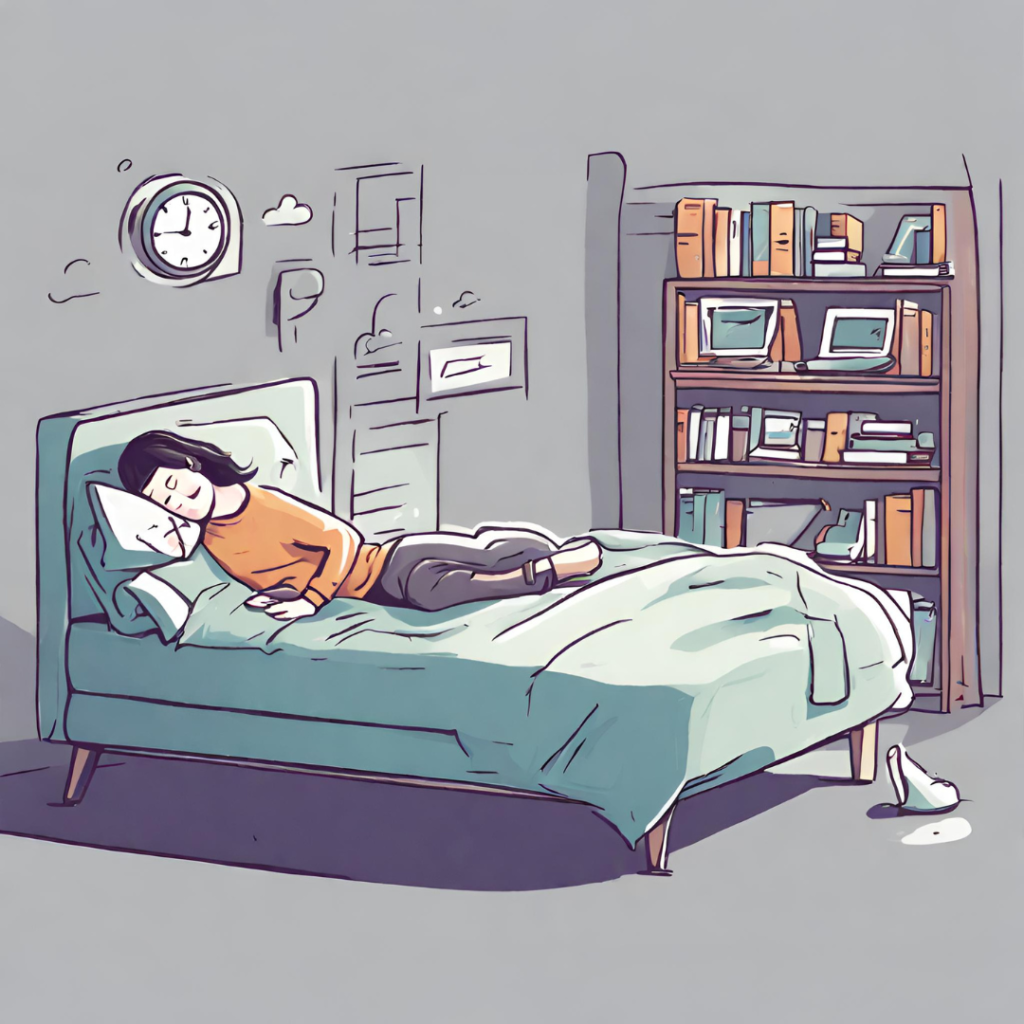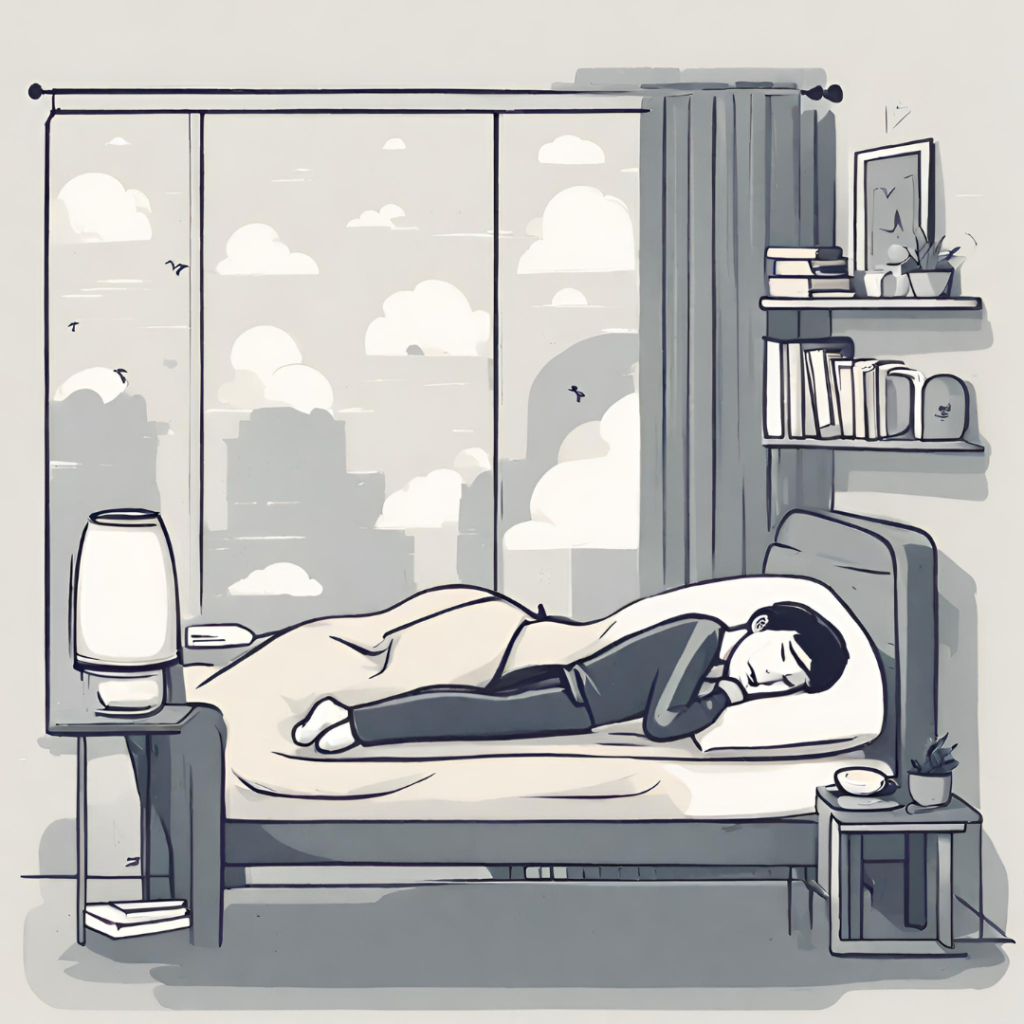In the hustle and bustle of modern life, the need for quality rest has never been more pronounced. With a significant portion of our lives devoted to sleeping, and the occasional nap acting as a cherished respite, understanding the fundamental differences between these two states of rest is essential. This in-depth exploration, titled “Napping vs Sleeping: Maximizing Restful Benefits,” aims to demystify the nuances of napping and sleeping, highlighting their unique benefits and guiding you towards optimizing both for your health and well-being.
The Science of Sleep: Essential for Nighttime Restoration
The nightly odyssey of sleep is an intricate biological process that is as vital as it is complex. As we lay our heads down and drift off, our bodies embark on an essential journey through the stages of sleep, each with its distinct physiological markers and benefits in the realm of sleep health.
The Sleep Cycle: Understanding Stages for Better Rest
The architecture of sleep comprises a sequence of stages that repeat cyclically throughout the night. We transition from light sleep (Stage 1 and 2 of non-REM) into deep, restorative sleep (Stage 3 of non-REM), and eventually into REM sleep, where the mind conjures dreams. This cycle, vital in the sleep versus nap debate, repeats approximately every 90 minutes, weaving a tapestry of rest that is crucial for our health in the context of Napping vs Sleeping: Maximizing Restful Benefits.
Nighttime Sleep: A Foundation of Well-being
The benefits of a proper night’s sleep are innumerable, touching every facet of our physical and mental well-being. It’s during these silent hours that our bodies repair tissues, our brains consolidate memories, and our minds process emotions. A lack of adequate sleep can leave us vulnerable to a host of issues, from impaired cognitive function and mood disorders to increased risk of chronic diseases, underscoring the importance of maximizing sleep benefits.

The Subtle Art of Napping: A Daytime Strategy for Rest
Napping, often perceived as a luxury in fast-paced societies, is actually a powerful tool in our arsenal for maintaining alertness and productivity. These brief interludes of rest can range from a fleeting ten minutes to a more substantial hour or more, each with its unique set of benefits in the context of Napping vs Sleeping.
Understanding Napping: Types and Timings for Optimal Rest
Napping can be categorized based on duration and the resulting benefits, a key aspect in the discussion of Napping vs Sleeping: Maximizing Restful Benefits:
- Power Nap: A brief 10-20 minute rest that enhances alertness and motor skills without the grogginess that can accompany longer naps, offering a quick refreshment break.
- Standard Nap: Lasting up to an hour, this nap allows for deeper rest, improving memory recall and decision-making abilities, making it a significant component in the nap vs sleep debate.
- Full Cycle Nap: Mimicking a full sleep cycle, this 90-minute nap includes all stages of sleep, aiding in creativity and emotional processing, highlighting the unique benefits in the napping vs sleeping comparison.
The Strategic Power of Napping
Far from being a sign of laziness, a well-timed nap can be a strategic choice that reaps dividends in productivity and well-being. It can counteract the effects of sleep deprivation, bolster the immune system, and even enhance learning. The key is to nap smart – understanding the best time and length for a nap that complements, rather than disrupts, your regular sleep pattern in the pursuit of maximizing restful benefits.
Napping vs Sleeping: Delineating the Two Types of Rest Patterns
While napping and sleeping share the common goal of rest, their differences are significant, a crucial element in the Napping vs Sleeping: Maximizing Restful Benefits dialogue:
- Chronology: Sleeping aligns with our natural circadian rhythms, typically occurring at night. Napping is a versatile daytime activity, serving as an auxiliary source of rest and key in understanding the napping vs sleeping benefits.
- Stages: A full night’s sleep includes multiple cycles of non-REM and REM stages, while naps may encompass only a part of one cycle, an important consideration in maximizing restful benefits.
- Depth and Quality: Nighttime sleep allows for deeper, more consistent rest. Naps, particularly shorter ones, offer lighter restorative benefits, underscoring the distinct roles in napping versus sleeping.
- Impact on Cognitive and Physical Health: Both improve mental and physical health, but in different capacities. Sleep is fundamental for long-term cognitive and physical health maintenance, while naps offer short-term benefits, an integral part of the Napping vs Sleeping conversation.

Harnessing the Benefits: Tips for Optimal Rest
To maximize the restorative powers of both napping and sleeping, certain strategies can be employed:
For Optimal Sleeping:
- Regularity Rules: Establish and adhere to a consistent sleep schedule to align with your body’s internal clock, a cornerstone of balancing napping vs sleeping.
- Environment Matters: Craft a sleep-conducive environment – cool, dark, and quiet – to signal to your body that it’s time to wind down, essential in maximizing nighttime rest benefits.
- Pre-Sleep Rituals: Engage in calming activities before bed to prepare your mind and body for sleep, a critical step in enhancing sleep quality.
For Effective Napping:
- Timing Is Everything: The ideal time for a nap is during the post-lunch dip in energy, typically in the early afternoon – a key tactic in maximizing the restful benefits of napping and sleeping.
- Duration Matters: Limit naps to 10-20 minutes to avoid sleep inertia, the grogginess that can follow deeper stages of sleep, an essential aspect in maximizing nap benefits.
- Comfort Is Key: Choose a restful environment – quiet, dimly lit, and comfortable – to facilitate a refreshing nap, which is crucial in your nap vs sleep efficiency strategy.
Napping vs. Sleeping: Striking a Harmonious Balance
Both napping and sleeping are vital components of a healthy lifestyle, each with its role and benefits. Nighttime sleep is the bedrock of our well-being, providing the deep, restorative rest our bodies and minds need. Napping, when used judiciously, can complement this by providing a quick, refreshing boost to our daytime functioning, a vital part of the Napping vs Sleeping: Maximizing Restful Benefits ethos.
By understanding and respecting the differences between napping and sleeping, we can make informed choices about our rest habits, optimizing our health, and maximizing our waking hours. Whether it’s committing to a regular sleep schedule, crafting the perfect environment for rest, or mastering the art of the power nap, each step we take towards better rest is a step towards a healthier, more vibrant life.
Conclusion: Napping vs. Sleeping
Remember, in the relentless pace of modern living, a well-timed nap can be a powerful ally. It’s not just about catching up on lost sleep; it’s about enhancing our overall well-being and unlocking our full potential in the Napping vs Sleeping journey. So, whether you’re settling down for the night or pausing for a midday nap, cherish these moments of rest. They’re not just a necessity; they’re a gift in the pursuit of maximizing restful benefits.


